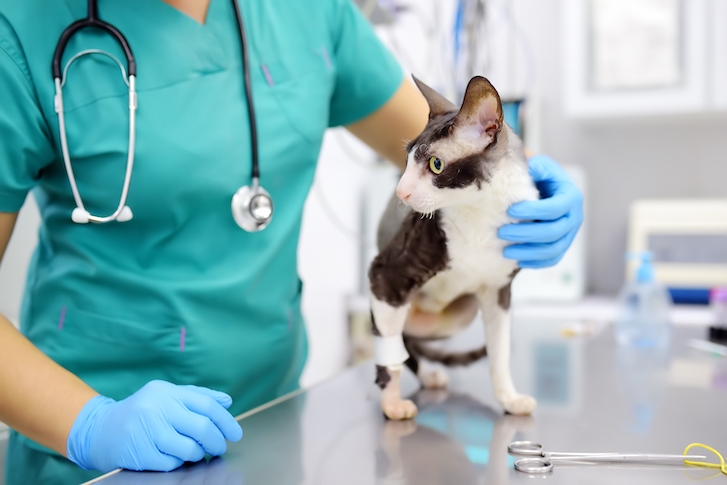Most students who demonstrate interest in pursuing the medical field cite the pre-med track as their preferred area of study. Within the pre-med track, there are plenty of options to choose from. Whether you’re a budding optometrist, an aspiring physician, or a future heart surgeon, there is no doubt that the medical field is diverse. Given the current state of our world, many students may feel called to become future health care providers in order to address pressing issues related to the pandemic and public health at large.
One track that may fly under the radar is the pre-vet track. Short for pre-veterinary, the pre-vet track is intended for students who wish to pursue a career working with animals and providing for their well-being. If you consider yourself your pet’s best friend or prefer hanging out with animals over people, then going pre-vet may be the route for you! According to the Association of American Veterinary Medical Colleges (AAVMC), nearly 3,000 students attend veterinary schools each year. Many students may wonder how to get started on the pre-veterinary track and gain admission into top veterinary schools. Here’s how!
How can I get started on the pre-vet track?
The pre-vet track, similar to the pre-med track, is not a specific major but an aggregate of classes, internships, research experiences and applications students complete in order to gain admission into veterinary school. You can get started on the pre-veterinary track as early as high school by taking classes such as Biology, Chemistry and Advanced Placement or International Baccalaureate science classes that will provide you a solid foundation in the sciences. The AAVMC recommends maintaining solid grades and a high GPA throughout high school, especially in the sciences and maths, and gaining experience working with animals by volunteering at a pet shelter or with a local veterinarian.
When it comes to creating a college list, start by researching schools that offer pre-vet courses and programs, as well as opportunities to network and become a part of a community of like-minded students on campus.
As you research schools, keep track of what schools offer which programs and the careers that their students pursue upon graduating. Schools such as Cornell and Swarthmore offer great established pre-vet routes for undergraduate students. Although each route looks different depending on the school you attend, you can expect to take a science-heavy course load. There is no one standard pre-veterinary track! For instance, Cornell requires prospective students interested in their Animal Science department to take courses such as “Contemporary Perspective in Animal Science” and “Principles of Animal Genetics” as well as select from the following list of concentrations: Integrative Physiology and Nutrition, Pre-Veterinary Medicine, Dairy Management, or Applied Animal Biology and Interdisciplinary Studies.
Schools like Cornell and NYU require or strongly encourage students to select a specific major rather than choose from a list of similar majors, as pre-med students often do. For instance, although pre-med students at NYU can select any major of their choice, NYU advises their pre-veterinary students to major in Biology to set them up for success by taking additional required courses for when they apply to veterinary school. You should also take a look at organizations that you can join in college that relate to the pre-vet track.
In addition, as you prepare your college applications, you will be asked to explain why you’ve chosen your indicated major and what you hope to gain from your college education in your supplements. This would be a great opportunity for you to demonstrate and justify your interest in animal science. You can draw from your work experiences in high school or an academic subject that inspired you to pursue this route. Regardless of the topic on which you choose to elaborate, you must demonstrate your authenticity and passion in both your personal statement and supplements
If you are planning to attend veterinary school upon graduation from college, you should begin prepping for the Graduate Record Examination (GRE) and the Biology GRE subject test sometime between your sophomore and senior year of college. Some schools may accept the MCAT in lieu of the GRE – you can find more information on the Association of American Veterinary Medical Colleges’ website.
Something to be considerate of is that although most veterinary schools accept (and oftentimes, require) students who’ve completed a four-year degree, it is possible to apply to veterinary school before you graduate from college, so as long as you have met the course requirements. Be sure to check each veterinary school’s application website to make sure you’ve met all the requirements to apply to veterinary school.
Top Veterinary Schools
Once you’ve met the required coursework and/or graduated from college, studied for your standardized tests, and secured your letters of recommendation, you are taking the right steps to apply to veterinary school! Here are some of the top veterinary schools in the country according to US News and World Report:
University of California, Davis (UCD)
Located in Davis, California, UCD offers students over 28 research departments and clinical programs. Some of the departments to choose from include the Department of Medicine and Epidemiology, where students can explore various treatment options and diagnosis among animals, as well as the Department of Surgical and Radiological Science. There are also ample research opportunities and labs where you can become a part of or start your own research.
Cornell University
Nestled in the beautiful town of Ithaca in upstate New York, Cornell is home to one of the best veterinary programs in the country. There are a multitude of ways to explore and supplement learning through classes as well as residencies and externships. Through these externships, students can learn more about services related to oncology in animals, shelter medicine, and dermatology, to name a few.
Colorado State University
Colorado State University prides itself in creating the next generation of leaders who care deeply about the health of animals, the people and the planet. Their community-minded approach to veterinary studies allows students to choose from departments such as Environmental and Radiological Health Sciences or Microbiology, Immunology, and Pathology.
North Carolina State University, Ohio State University, Texas A&M, University of Pennsylvania
Tied for fourth in the nation, the schools listed above offer veterinary programs for every student. Whether you’re looking for a veterinary program that would allow you to study abroad through Ohio State’s Global Engagement Program, or pursue dual degrees such as VMD/MBA or VMD/PhD at UPenn, each of these schools are great options for students looking to further their veterinary careers.
Students interested in pursuing the pre-vet track should be prepared to step into a fulfilling and meaningful career path. It’s never too early to get started – whether you’re in high school or college or have already completed your undergraduate degree, you can begin preparing for the pre-veterinary track by taking relevant classes, looking for internship and job opportunities, as well as exploring veterinary schools you may be interested in applying to.











